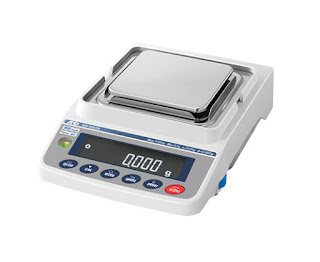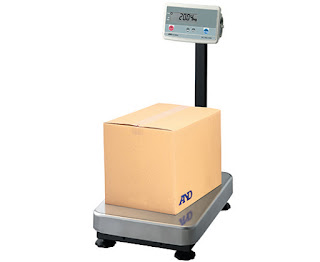What do you mean by
weighing scales
To understand the concept of weighing scales, you need to step
back to the era of Ancient Egypt. It gives the picture of a stand with arms on
both sides balanced equally fixed on a pivot. Earlier the weighing machine
showed deflection and that was popularly known as the spring scale. In modern
days the weighing machines are advanced and come with strain gauge cells or
springs.
Functioning of the
scales
Scale gives the value based on the force present between the
Earth and the weighed item. It Is known that weighing scales are recommended
for measuring the force, but yes it is quite conveniently used in offering
values in the other units of measurement like kilograms, pounds, and grams.
Scales present these days are more unique and are designed to perform various
types of work. Talking about the usage the weighing scales are widely used
ranging from packing items for shipping to the laboratory.
Scales usage are
extensive as you can find them in the form of small size with the precise value
used in laboratories. At the same time, scales like robust 10 by the 120-foot
pit and girder machines mainly used for weighing tractor trailers and trains
are also quite known. Hence, in a great way scales have smoothened the present
complicated life. Thus to comprehend how scales work accurately one has to have
complete knowledge about the terms such as weight and mass.
What are the main
differences between the weight and mass
●
Weight: Weight defines the density of the item. Its
calculation is based on the gravity of the items multiplied by the mass whose
values are constant. Like for example, the weight of an item on the plane will
be more than the item weighed on the mountain. No such difference is due to
gravitational difference. Weight is expressed in Newton which includes the
gravitational mass of an object along with the relative gravity. All together
it gives the value of the total force.
●
Mass: Mass shows the amount of matter present in the
item. Mass always bears a constant value irrespective of the measurements
taken. The commonly used mass measurements are kilogram and gram.
Compare and contrast
between scales and balances
Balances: Balances
are mainly used for determining the mass value. It does so by comparing the
known mass value against the unknown.
Speaking of balances it is more advanced and these days it is
extensively included in laboratories, medical centers, and other places.
Professionals use this scientifically upgraded equipment for other
developmental activities as well. Among the various types of balances, the most
known are precision, analytical, and microbalance.
Scales: Though
weighing scales are almost equal to balances but their accuracy level is less
compared to the balances. This is the reason why scales are used in the
beverage, health, commercial and industrial sectors. It is also considered
suitable for monitoring health, packing any kind of ingredients, etc.
Facts about the
industrial weighing scale
The usability of industrial scales is varied it is used both in laboratory and agriculture. The level
of precision is more in industrial scales which is why it is chosen for certain
environments which are acrid compared to the commercial setup.
This particular scale is highly used for operational,
legislative, and fiscal purposes. There are a variety of industrial scales
ranging from large scales for floor and cranes with the capacity to hold 10
tonnes to small-sized scales with the capacity to bear 1 kg.
Understanding the
difference between the digital and analogue scales
Analogue and digital are the two basic categories of scale.
●
Analog scale:
The acceptability of the analog scale was huge before the entry of the digital
scale. But one thing you can’t always expect to get some type of result from
the analog scale. The result differs because it works mechanically.
●
Digital scales:
The popularity of digital scales is
far-reaching moreover the result it shows is more authentic. Design-wise it’s
more catching and precise. The features of digital scales are more enhanced.
Like you can see advanced LCD, wide memory space, and upgraded weighing
capability compared to the analog scale.
Benefits and
disadvantages of the analog and digital scales
Analog scale advantage
They don’t require the supply of power as they work
mechanically so the result is shown in the same way.
The disadvantage of
analog scale
More expertise is
required to operate the scale
Advantage of digital
scale
●
Not much experience or expertise is needed to operate
this.
●
The precision level is more
●
The processing speed is fast
●
Readings are accurate
The disadvantage of
digital scale
It works on battery and needs to recharge the battery.
Ideas on Additional
Scales
●
Counting Scales
Counting scales are known for its versatility, it is mainly
used for weighing and counting items concurrently. Mostly used in the
industries, inventory office, laboratory. It is easy to use as it comes in a
portable form. You can either operate it with a battery or simply charge it
with electricity. This type of scale with a built-in port called RS232 allows
to transfer of data and enhance printing.
●
Postal and Retail Scales
It is particularly designed to weigh the parcels and letters.
The best about the electronic postal scale is that it enhances the efficiency
of mailing. Mostly comes with pans made of steel that adds longevity to the
structure. It can be used in two ways. The inbuilt transparent LCD adds clarity
to the digits. Most importantly, it is composed and less space-consuming. The
box comes with an AC adapter as the source of power supply.
● Metal and Jewelry Scales
The jewelry scale is a certified form of balance scale which
offers accurate measurement. It is particularly used to measure the weight of
valuable items such as metals, gold, silver in grams, and carats. The
calibrated jewelry scale offers the right value. The readability level of the
value is high because it comes with an advanced led display. The interface is
quite easy. Finally, it ensures that the product cost is at par with the
present market rate.
●
Medical scales
Medical scales are kinds of scales used for verifying medical
conditions. It offers accurate and precise weighing measurements. Mostly used
in pediatric centers, clinics, and hospitals. It is the onus of the medical
institutions to ensure the high-quality well-being and sound health of the
patients. It is the reason why they always invest in superior quality medical
scales. In the market, there is a lot to choose from ranging from wheelchair
scales to floor scales.
1.
NMI Trade Approved Scale
The NMI trade approved scales to ensure that your business is
in line with the legal needs of the Australia National Measurement Institute
ANMI. It offers wide arrays of scales for different kinds of applications.
Remember these scales are designed to work in compliance with governmental
procedures. They have certified NMI technicians who offer ongoing support.
What are the vital
factors that you should consider while buying the weighing scale
●
Level of accuracy
When you talk about accuracy the scale should be able to
provide a value that should be almost equal to the original value.
●
Calibration level
To understand the calibration you have to get an idea about the
standard value and the scales output. Note that it shows the difference between
the two. You have to use both the adjusted and standard weight to get the
result.
●
Scales Capacity
The capacity of the scale means how much weight it can bear.
●
Precision level
To check the precision level of the scale you need to keep eye
on how precise the result of the repeated measurements does show. Remember it
is not about the accuracy.
●
Readability
The smallest value that you can read on the scale is the
readability factor. It ranges from 0.1 gm to 0.0000001 gm.
●
Scale tare
It only shows the weight of the container and not the
container’s weight. Overall it intends to show zero reading on the scale.
Which is the accurate
scale?
Digital scale is the most accurate weighing scale. Here the
mass and weight of the object are obtained and written in digital form. You
will not have ambiguity when you are using the digital scale. Moreover, its
precision level is more which is why industries like health and cosmetics rely
more on this type of scale.
Scales might not give
accurate result always
Scales may lose accuracy with time because of daily usage.
However, recalibration helps to restore its accuracy. With time digital scales
also lose their potentiality because of an electrical snag.
It is also seen that new weighing scales also lose their
accuracy in high-temperature conditions. That is why scales with greater
accuracy level offer stability in the temperature. It is the reason why
industries clean the weighing equipment to ensure a better accuracy level.
Final say
Here we have compiled all the facts about the industrial
weighing scale. Go through the guide at once to understand the relevance of the
weighing scales and their various types as mentioned here.







No comments:
Post a Comment